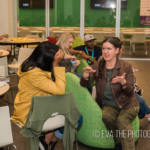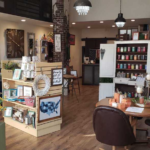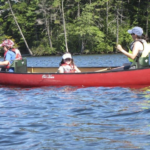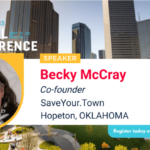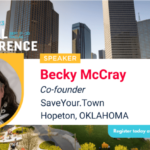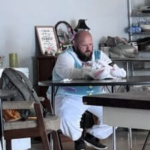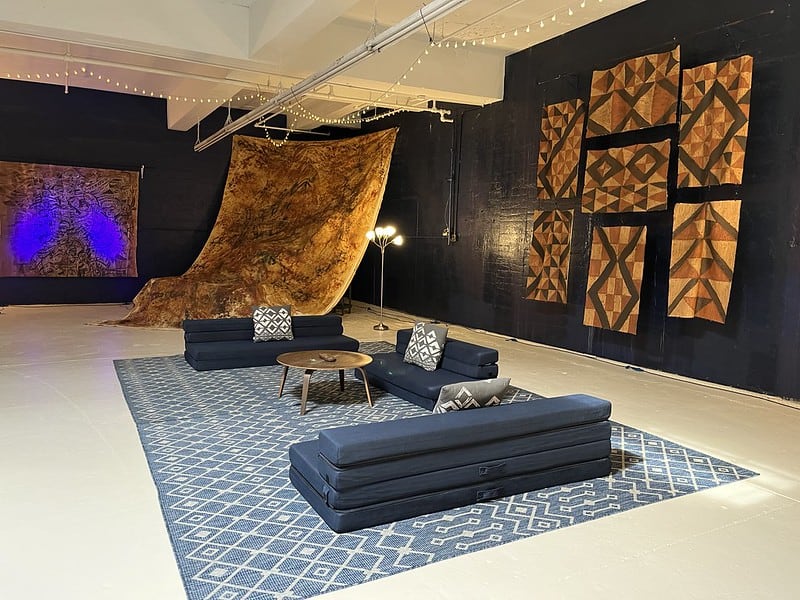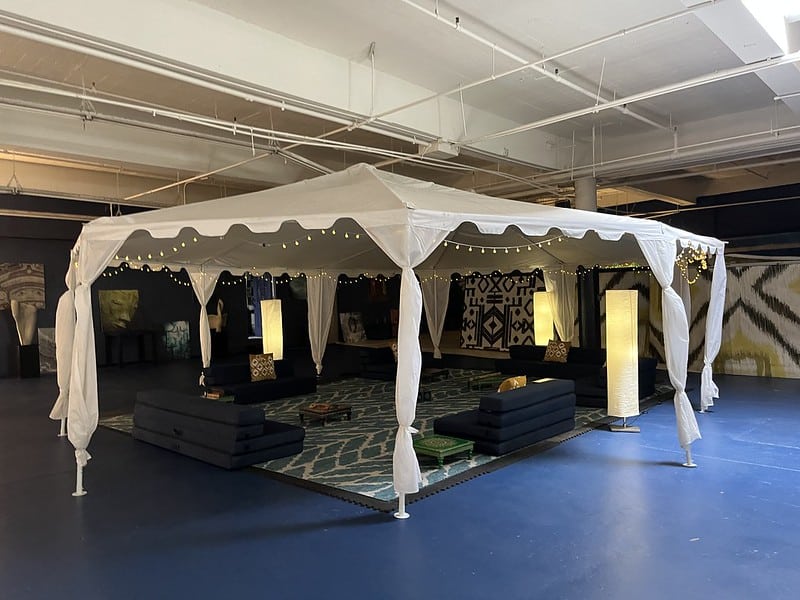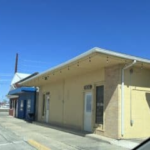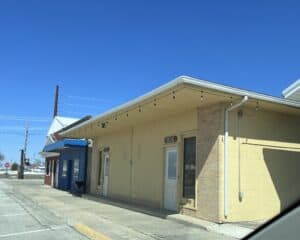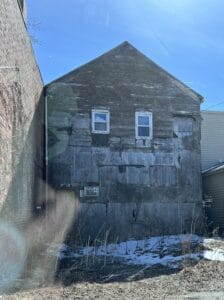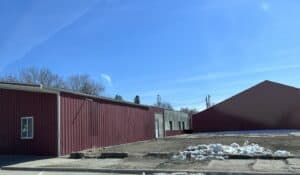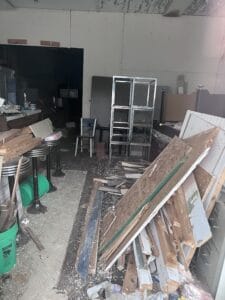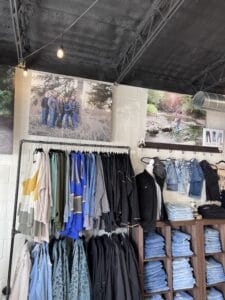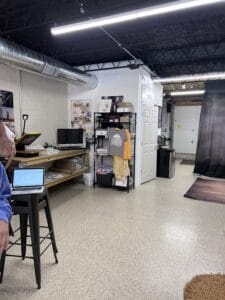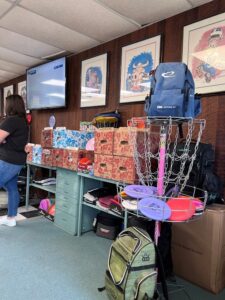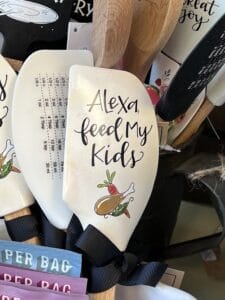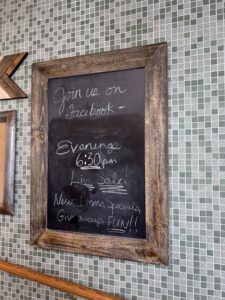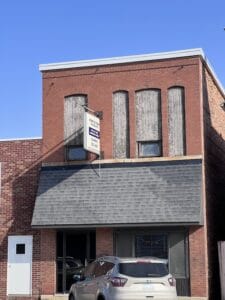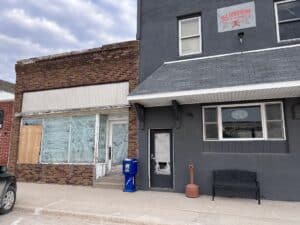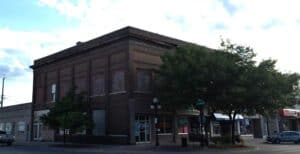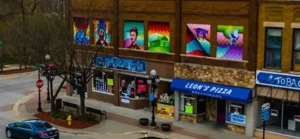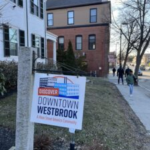Turn free advice requests into paying clients
Years ago, Thursday Bram asked me some questions about how freelancers and other consulting and professional folks can avoid giving away too much of their knowledge for free. Her article at Freelance Switch is no longer online, so I thought it was time to share it here, as well. Here’s some of my best advice […]
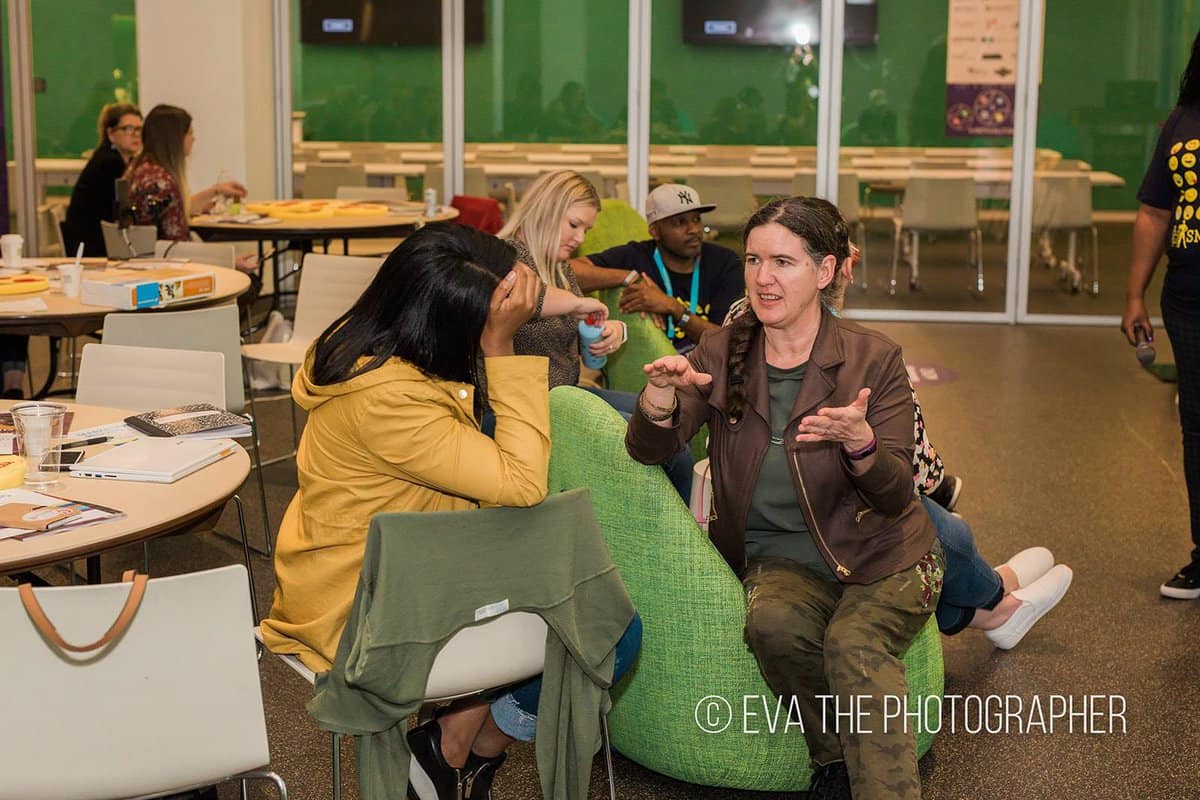
If we meet at a conference, I’ll be happy to give you some of my time. If you need more help, then it may be time for a coaching call. Photo (C) Eva the Photographer, courtesy of SMTulsa.
Years ago, Thursday Bram asked me some questions about how freelancers and other consulting and professional folks can avoid giving away too much of their knowledge for free. Her article at Freelance Switch is no longer online, so I thought it was time to share it here, as well.
Here’s some of my best advice on how to draw the line between free and paid conversations.
What is your reaction when someone asks to just ‘pick your brain’? Do you have a standard reaction that you use across the board or are there people that you’re more willing to talk to?
I decide how to handle people seeking free advice based on my existing relationship with them. Some people are close friends. I’ll help those folks more than someone who emails me out of the blue. Most of the questions seem to come from folks who don’t know me at all. So I try to assess the situation based on our relationship.
Do the people who just want to ask you questions typically turn into paying clients without much help from you?
It doesn’t happen by magic, you do need a strategy. And even then, not all of them will convert. Some are just freebies no matter what you do. I’m a collector of good phrases to use.
- Liz Strauss told me she would say, “If you’d like me to do that for you, I charge $XXX/hour.”
- Denise Wakeman said she will point people to her matching products already available. If someone asked her to look over their publication, she would give them the link to her sales page for a publication critique. Those products are really packaged services.
- Cathy Stucker would say, “I can spend ten minutes with you, and if you require more assistance I will be glad to schedule a consultation at my regular rates.”
- My colleague Deb Brown offers 15 minutes at no charge. When she gets on a call, she sets a timer. When it’s up she asks, “Do you want to go on with a paid conversation? That costs $XXX per hour.”
- Sheila Scarborough used to invite folks to talk with her at her weekly co-working session, Round Rock Jelly. If the question is more involved than can be answered there, it’s a consulting job.
- Jennifer Navarette told the story of meeting with a potential client in his office. He asked lots of questions. Finally, she stood up to come around the desk and reached for the keyboard. Her partner interrupted, “You do know that we just crossed into paid time?” he asked. “Oh, yes,” the prospect said, instantly converting to a paying client.
- Barry Moltz used to say, “time to turn on the meter.” (He’s from Chicago. Can you tell?)
Even with a special phrase in your arsenal, you still have to have a way for people to pay you.
What strategies have you used to turn this sort of person into a paying client? If it isn’t possible to do that, how do you keep this sort of person from wasting your time?
Offer them the help they need, but in a way that respects your valuable time. Here are three ideas of how to educate people on your own terms.
- Create a standard resource you give to people that want to do it themselves. Invest a few hours in creating a simple how-to booklet, paper or downloadable PDF, and save those hours you would normally spend trying to assist the freebie-seekers. You probably have all the info you need in your article or email archives.
- Do workshops. Charge a modest fee. Then Do-It-Yourself-ers can be encouraged to take the class, online or in person. This lets you group up the learners, help them all a certain amount, get paid for it, and allow some of them to see that they really do want professional help. Record the session. Then the next time you get hit up for more free advice, you can refer them to where they can purchase your workshop. Do NOT make this a pitch for your service. Do make it an honest useful training.
- Package your services into a defined product. Then charge for it. If you often get asked to look over someone’s plan, make that a service. Same with requests for help getting unstuck on a project. Once it’s a product, it’s easier to refer and sell.
- Set up a professional-looking place people can see your coaching or consulting offers. And give them a way to pay. They can’t buy something you aren’t actually selling. Use one of the many easy to use online learning platforms that lets you collect online payments.
You don’t have to charge everyone every time.
Decide in advance how much you want to reinvest in others. Maybe you’re happy to review a resume, reassure someone just getting started or spend some time with promising people in your area. Maybe you like to help at a conference whenever possible. That’s up to you.
Set you limits, and be ready to speak up for yourself.
The Allure of Authenticity: Rural stories can give your product a leg up
Why Rural Craftsmanship Resonates in Online Sales Guest post by Tance Hughes In today’s digital age, the online marketplace is bustling with options at every click. Amidst the buzz of big brands and flashy advertisements, there lies an understated yet profound power: the allure of authenticity. For rural entrepreneurs, this authenticity is rooted in their craft, […]
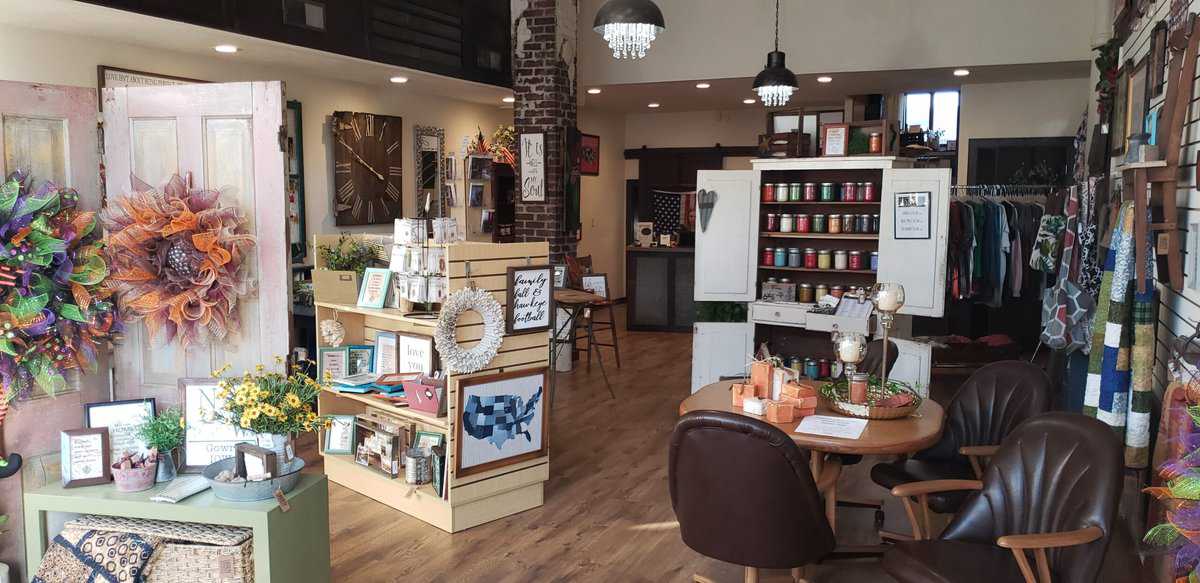
For rural entrepreneurs, authenticity is rooted in their craft, the traditions it stems from, and the genuine narratives behind each product. Photo by Deb Brown
Why Rural Craftsmanship Resonates in Online Sales
Guest post by Tance Hughes
In today’s digital age, the online marketplace is bustling with options at every click. Amidst the buzz of big brands and flashy advertisements, there lies an understated yet profound power: the allure of authenticity. For rural entrepreneurs, this authenticity is rooted in their craft, the traditions it stems from, and the genuine narratives behind each product.
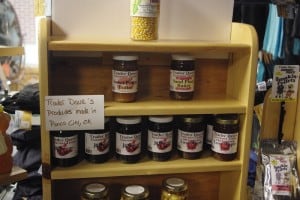
A jar of jam preserving the flavors of a bountiful summer harvest can embody more than mere utility.
Handcrafted Goods: Beyond Just a Product
Each handcrafted item carries with it a story of its origin. Whether it’s a quilt stitched during the quiet hours of a winter evening, or a jar of jam preserving the flavors of a bountiful summer harvest, these items embody more than mere utility. They represent hours of labor, generations of passed-down knowledge, and a deep connection to the land and community.
When consumers purchase these goods, they’re not just buying a product; they’re buying a slice of history, a tale of dedication, and a bond with the artisan. This level of personal connection is something mass-produced items often lack, no matter how high their quality might be.
Telling the Tale: Narratives That Captivate
For rural entrepreneurs looking to stand out in the online market, the key is to emphasize these narratives. Detailed product descriptions that talk about the craftsmanship, the traditions that inspired the product, or even anecdotes about its creation can captivate a potential buyer’s imagination. High-quality photos and videos, showcasing the product in its natural rural setting or in the process of being made, can further enhance this narrative.
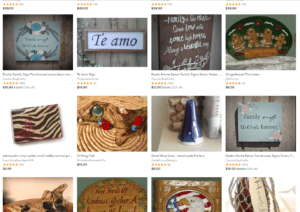
Platforms like Etsy or ArtFire thrive because they promise products imbued with authenticity.
The Modern Consumer: Seeking Genuine Connections
Modern consumers, bombarded by generic advertising and overwhelmed by choices, are increasingly drawn to authentic experiences and products. A survey by Cohn & Wolfe found that 91% of global consumers value honesty from brands most. This means that rural artisans, with their genuine products, have a competitive edge. Their offerings stand as a beacon of genuineness in an oversaturated market.
Moreover, the rise of platforms like Etsy or ArtFire, which specifically cater to handmade and vintage goods, attests to this growing consumer trend. These platforms thrive because they promise products imbued with authenticity.
What Does This Mean For Me?
The digital marketplace might seem vast and impersonal, but therein lies an opportunity for rural entrepreneurs. By leveraging the inherent authenticity of their crafts and effectively communicating the stories behind each product, they can forge deep connections with consumers. In an era where genuineness is increasingly cherished, rural craftsmanship is not just a relic of the past but a vibrant force shaping the future of online sales.
About the guest author
Tance Hughes is The Ruralpreneur, empowering small town entrepreneurs to expand their product-based businesses through e-commerce. Sign up for his regular newsletter at The Ruralpreneur.
Get started as an outdoor outfitter without breaking the bank
Our latest Survey of Rural Challenges said natural resources are rural communities’ best rural assets, but most places don’t have enough outfitters to take advantage of them as tourism development. Here’s how rural people like you can take small steps to grow into outdoor outfitters. Gather Your Crowd to attract groups and organizations that want to help […]
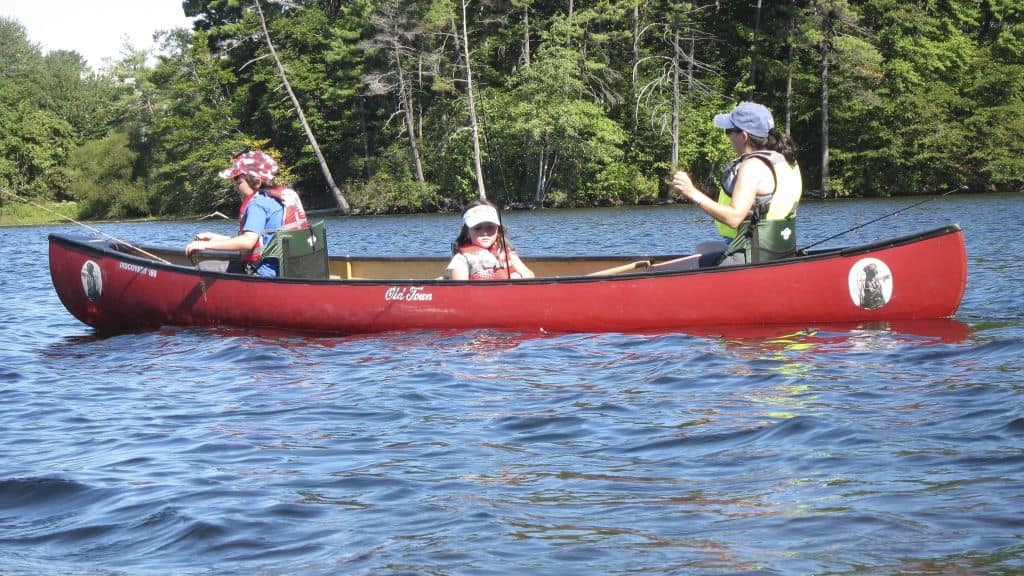
Kids in a canoe photo (CC) by CC Chapman
Our latest Survey of Rural Challenges said natural resources are rural communities’ best rural assets, but most places don’t have enough outfitters to take advantage of them as tourism development.
Here’s how rural people like you can take small steps to grow into outdoor outfitters.
- Gather Your Crowd to attract groups and organizations that want to help
- Build Connections to borrow equipment and acquire insurance
- Take Small Steps by splitting the work with different businesses and organizations in the community.
Both Deb and I visited Eastern Kentucky last year. I visited Estill County, and Deb was in Jackson County. We each shared a version of this process to help get tourism ideas off the ground.
Ask around, others may help
Kathy from Jackson County wanted to start her own outdoor business but she only had one side by side ATV to use. Then another person offered a canoe for Kathy to rent out. This started a conversation around the room of how she could start now, using what others offer and they would help her too.
Small steps to take now
In Estill County, we sketched out the steps to grow their own outfitters for river and forest recreation. Here are some of the key steps:
- Talk to an existing outfitter in a similar area from the surrounding communities. Ask lots of questions.
- Find local outdoor recreation groups. Their members might be good potential operators, partners or customers.
- Consider covering startup costs with Sponsor-A-Canoe with local business logos or wraps.
- Cover insurance costs by finding a sponsor or getting a discount through the chamber or organizations like the American Canoe Association.
- Break up all the parts of the business and find a person or group to manage or run each part. One group might own the canoes, another has a trailer and can handle payroll, another might volunteer for part of the work during startup.
It’s not as traditional as starting all at once with a business plan and lots of debt, but it’s more of the rural approach. We’re used to making do and making things work.
What’s behind your community’s historic population shift? Census map links
By Paula Jenson I spent some valuable time last month doing a bit of data discovery about rural communities. In my search I explored an interactive map* showing the percent change in total population from the 2010 to the 2020 Census at both the state and county levels. I first zoomed in to view the […]
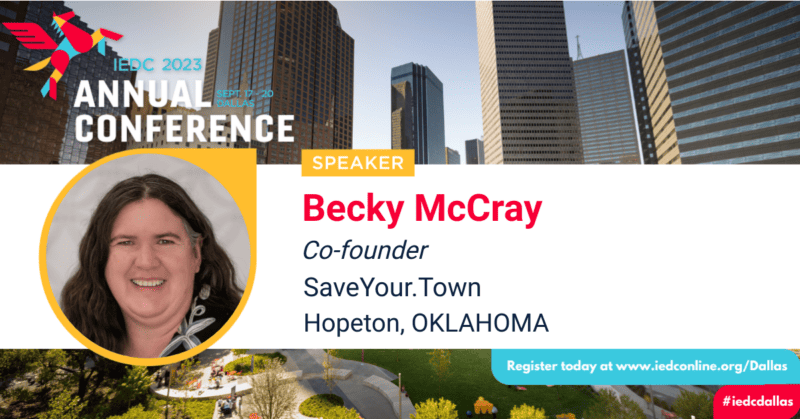
Deb Brown and I will be speaking at the International Economic Development Council (IEDC) Annual Conference in Dallas on September 17, 2023.
As co-founders of SaveYour.Town, Deb and I have dedicated ourselves to helping rural communities thrive. We understand the challenges and unique opportunities that rural community builders and entrepreneurs face, and we strive to empower them to bring their ideas to life. That is why we are excited to present our interactive workshop, Bringing Your Ideas to Life: Idea Friendly Workshop for Rural Revitalizations on Sunday, September 17 at 3:45 PM.
In this workshop, we will guide you through a dynamic and engaging experience designed to spark your creativity and provide you with practical steps you can put into action right away back in your own communities.
We believe that rural areas have incredible potential. By nurturing an idea-friendly environment, we can create the towns we most want to live in.
During this interactive workshop, you will have the opportunity to connect with fellow economic developers, share your challenges, and collaborate on innovative solutions. Our goal is to inspire you and equip you with practical strategies that can be applied immediately.
Whether you are a long-standing economic developer, a local entrepreneur, or a community leader, this workshop is designed to give you the tools and knowledge necessary to turn your vision into reality.
Mark your calendars for September 17-20, 2023, and join us at the International Economic Development Council Annual Conference in Dallas.
This innovative Annual Conference will explore, modernize, and grow successful industry strategies and practices by focusing on each of IEDC’s five strategic initiatives:
- Leadership Development
- Workforce & Talent Development
- Supporting Entrepreneurship
- Fostering Economic Opportunity & Diversity
- Economic Transformation
Learn more about the IEDC conference here.
Revitalize Your Rural Community: Join Us for an Interactive Workshop at the 2023 IEDC Annual Conference
Deb Brown and I will be speaking at the International Economic Development Council (IEDC) Annual Conference in Dallas on September 17, 2023. As co-founders of SaveYour.Town, Deb and I have dedicated ourselves to helping rural communities thrive. We understand the challenges and unique opportunities that rural community builders and entrepreneurs face, and we strive to […]

Deb Brown and I will be speaking at the International Economic Development Council (IEDC) Annual Conference in Dallas on September 17, 2023.
As co-founders of SaveYour.Town, Deb and I have dedicated ourselves to helping rural communities thrive. We understand the challenges and unique opportunities that rural community builders and entrepreneurs face, and we strive to empower them to bring their ideas to life. That is why we are excited to present our interactive workshop, Bringing Your Ideas to Life: Idea Friendly Workshop for Rural Revitalizations on Sunday, September 17 at 3:45 PM.
In this workshop, we will guide you through a dynamic and engaging experience designed to spark your creativity and provide you with practical steps you can put into action right away back in your own communities.
We believe that rural areas have incredible potential. By nurturing an idea-friendly environment, we can create the towns we most want to live in.
During this interactive workshop, you will have the opportunity to connect with fellow economic developers, share your challenges, and collaborate on innovative solutions. Our goal is to inspire you and equip you with practical strategies that can be applied immediately.
Whether you are a long-standing economic developer, a local entrepreneur, or a community leader, this workshop is designed to give you the tools and knowledge necessary to turn your vision into reality.
Mark your calendars for September 17-20, 2023, and join us at the International Economic Development Council Annual Conference in Dallas.
This innovative Annual Conference will explore, modernize, and grow successful industry strategies and practices by focusing on each of IEDC’s five strategic initiatives:
- Leadership Development
- Workforce & Talent Development
- Supporting Entrepreneurship
- Fostering Economic Opportunity & Diversity
- Economic Transformation
Learn more about the IEDC conference here.
Jackson County and Grayson KY Stories and Volunteers
Guest post by Deb Brown Change can be activated in a society by way of story.” from the book Spirit Run I just returned from Jackson County, Kentucky and the small town of Grayson, Kentucky. There’s a natural beauty in those mountains and winding roads. The people were kind, helpful and want to see their […]
Guest post by Deb Brown
Change can be activated in a society
by way of story.”from the book Spirit Run
I just returned from Jackson County, Kentucky and the small town of Grayson, Kentucky. There’s a natural beauty in those mountains and winding roads. The people were kind, helpful and want to see their towns thrive. They shared stories of their history, the people and their dreams with me. Some had stories of failure and are working on raising up out of that despair much like the phoenix did. When I’m on an Idea Friendly onsite visit, I look for ways people can take small steps, to volunteer in a small way. I also look for the stories of locals already serving their well-loved communities. The power of story has the ability to change the outcome of a town.
Jackson County
This is a story to be told, often.
I met a couple in Sand Gap, KY who bought The Whistle Stop Express and there was a large building that came with it. They’ve turned it into a community center and the folks in town are welcome there with open arms. There are meals for the hungry, hugs for all, opportunities to belong to a community. There’s been a problem with drugs in town, and several residents are no longer the people they were before drugs ruined their lives. These owners treat everyone with respect and care. But even more than that, they treat them with love. They set an example every day of how to treat our fellow human beings.
Here’s a one day job volunteering that he did willingly.
One gentleman showed up at the community center the day I was there dressed as the Easter Bunny. He had been at the local jail, the community center, the gas station – anywhere that needed some cheering up.
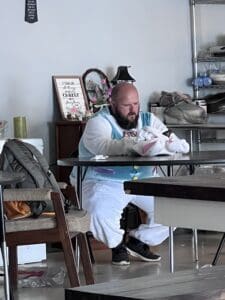
Here’s another short term opportunity to volunteer.
We took a driving tour around Annville, KY and noticed this housing place nestled among the mountains with a babbling brook and park space behind it. Shame on me, my first thought was “why do people keep trash like that outside of their homes?” It was pointed out to me that the grandmother who lives there is raising her grandchildren and doesn’t have the wherewithall or physicality or time to clean up that small mess. The woman giving us the tour stated this would be a great half a day volunteer opportunity for a bunch of ninjas. And said she’ll get right on that. Two other people in the car said they’d help.
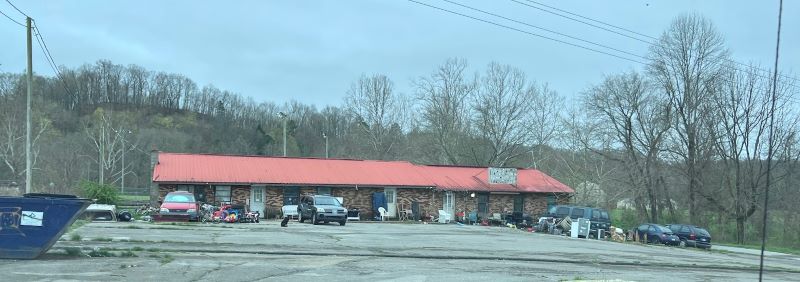
Talk to each other
The first evening I was in Jackson County they held a gathering for anyone who wanted to come and hear about ways to save their community. Erik from Backroads of Appalachia made available the small historical site at Big Hill to gather. The image below is just 1/3 of the room. I don’t go to any town, bring a template with some big city idea on it they can dumb down. I ask folks to tell me who they are and what they want in their community. Then we talk about it.
Here’s one story of many folks who volunteered in a small way to help a new business get started.
Kathy pictured in the lower left wants to start her own outdoor business providing items to use to traverse the region. But she only has one side by side. We talked about just getting started with that one item. And one lady offered her canoe for Kathy to use. This started a conversation around the room of how she could start now, using what others offer and they would help her too.
How volunteers can work together in partnership
The couple next to Kathy are farmers, who used to run a dairy. Dairy farming is hard, and they had to try something else. He has converted the dairy barn into a space where he can do woodworking. He also wants to really use that space, and make it available for others to use. We talked about the Old Geezers Club in Akron, Iowa. Several others in the room had ideas for them and wanted to help. There were artists in attendance and were grateful for a space to work on their art, and also sell it. They could also volunteer to be in the space sometimes to help run it.
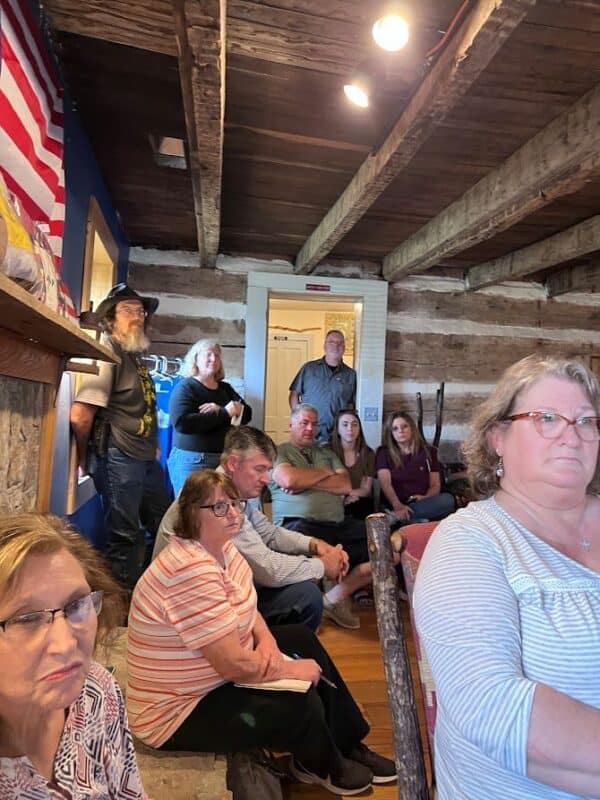
Your officials need to hear your stories
McKee, KY is the county seat and also has the fastest internet speed in the United States. That’s because the Peoples Rural Telephone Company and their leader Keith Gabbard have made it so. You can read about how that happened in The New Yorker article. This group met and had a lively discussion with me. Keith is the guy on the far left. Tim Truett, the 89th district state representative was there too. He’s also the elementary school principal. Small town folks wear many hats. Many of these folks have been trying to establish a lodging tax. However, a magistrate has to ask the fiscal court to review it. And no magistrate would do that. Funny, you mention the word ‘tax’ and people get nervous. Tim, along with the tourism board, got the fiscal court to look at it at their next meeting!
Talking about what you want can lead to volunteer actions that make small things happen
One gentleman was fed up with the trash and illegal dumping in the area. Another artist in the room proposed using the old cars and create a transformer art exhibit. There were stories of folks who’ve worked in the region making their parks available to all. We found out there are 200 rooms available for visitors to use, but not an updated list of where these Airbnb’s and cabins were located. This week I received a spreadsheet with that updated list! Talking about what they wanted led to volunteer actions making small things happen. The power of sharing your story shines through.
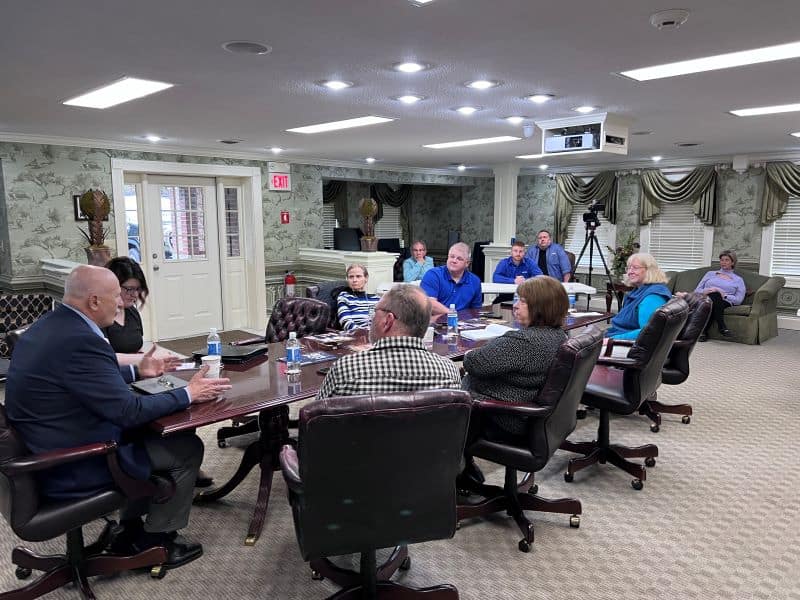
Grayson, KY
You can stop if you want
Grayson was not to be outdone. We started at the Grayson Art Gallery early in the morning. A big tables worth of people showed up at 8 am. They were there to hear what they could do to help their small town. Many of them stayed for the rest of the day, spent with a walking tour of downtown, lunch and a driving tour of the region. The folks in the picture below know how to volunteer.
There’s the local college president, the mayor, a city council person, a couple of business owners, a state senator, a high school student and the Main Street director. We talked about partnerships, taking small steps and getting in action right away. The state senator told us a funny story, well, kind of funny. They used to have a master gardener’s group that was active. But they got older and less willing to do the work. So they created fundraisers … to pay others to do the work! Oh, the irony.
Idea Friendly: kill the committees, get to work and have fun with taking small steps
The mayor kept notes on his phone, but just the notes that pertained to him. (Yes, I gave him assignments.) The Main Street folks plan to set up an Art Trail and involve the artists in town. And the two of them won’t do it all themselves. The artists and building owners will be involved. As we walked around, we got some permissions on places to put murals.
There was a discussion about adding EV stations downtown in a parking lot. One of the attendees will find out how to make that happen. The mayor put on his list to work on lighting up the parking lot at night, so store owners can park there safely instead of in front of their stores. The high school student is going to bring her friends to city council meetings. The mayor thinks adding a nonvoting student to the council is a great idea and will pursue it. There are many opportunities for everyone to volunteer, without setting up committees, in the ways that they want to help.
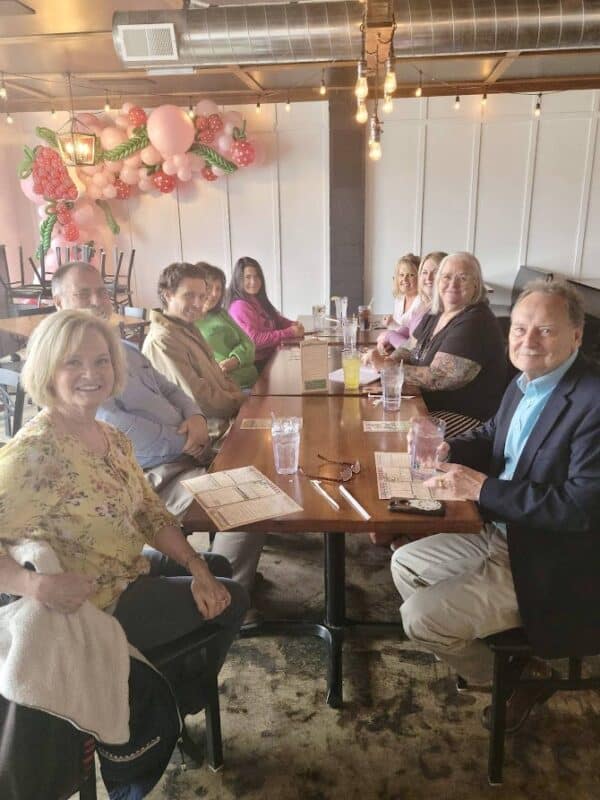
Volunteering can be easier and with more people, yet make such a big difference in a small way
I started this letter thinking about the importance of telling our stories in our own communities. That change will come when our good reasons why are out there for more people to know about. Then I found a common theme amongst these stories – how volunteering can be easier and with more people, yet make such a big difference in a small way. Many people in small towns are not aware of the various ways they are already volunteering, or the many other ways where volunteers are needed. If only for a few hours.
Telling our stories, sharing our ideas and asking for help make change possible, and sooner.
Thanks to the kind folks in Kentucky for welcoming me with open arms!
Empty Building idea: Make a Zen-like space for your people
Steal this healing and calming idea for your downtown! At the Main Street Now Conference in Boston, I joined a trolley tour of the six Dorchester Main Streets. We got a chance to walk through The Guild‘s expansive building. While this space is only one of many projects of The Guild, it was the one that […]
Steal this healing and calming idea for your downtown!
At the Main Street Now Conference in Boston, I joined a trolley tour of the six Dorchester Main Streets.
We got a chance to walk through The Guild‘s expansive building. While this space is only one of many projects of The Guild, it was the one that caught my attention as useful for small towns.
The building was furnished and opened in less than 5 months for less than $100,000. It’s intended as a healing space, a calm space where anyone from the neighborhood can come in and relax for a time. They also hold special events for the community. Not weddings or parties, but more community oriented gatherings.
The art is from local artists. Many of the earth-toned wall hangings are dyed with the actual dirt from this neighborhood, that’s how rooted this is in the community.
- You could pop-up a similar community healing space temporarily, and for a lot less money. I bet small towns could borrow just about everything they’d need, including the building.
Which feels better downtown: a calming space or an empty building?
Vacant buildings, especially formerly significant ones, are reminders of loss, Trinity Simons Wagner of the Mayors’ Institute on City Design said at the Placemaking Conference.
That empty building as a reminder of loss adds negative weight to everyone’s perception of your downtown. Your people deserve a calming space like this much more than yet another empty building.
This also ties into the Wellness Travel trend we’ve mentioned. Wellness appeals to both locals and visitors. maybe pop this up around the time of a big event.
Photos by Becky McCray.
What do you think about doing this in your community?
How to fill empty buildings: real world examples Deb Brown shared with Gowrie, Iowa
I attended the Chamber Dinner in Gowrie, Iowa and talked about small town ideas they could use. It was my pleasure to spend a couple of days there. This article talks about small town ideas for the community and by the community. Got empty buildings? Every small town has empty buildings and empty lots. Gowrie […]
I attended the Chamber Dinner in Gowrie, Iowa and talked about small town ideas they could use. It was my pleasure to spend a couple of days there. This article talks about small town ideas for the community and by the community.
Got empty buildings?
Every small town has empty buildings and empty lots. Gowrie is no exception. During my walk around, I took these photos of empty buildings.
My favorite thing to do when you have several empty buildings is to host a Tour of Empty Buildings.
An Empty Buildings Tour is a community event that showcases vacant or underutilized buildings. The goal of the tour is to raise awareness of the issue of vacant buildings and to generate interest in repurposing them. Tours can be organized by local chambers of commerce, economic development agencies, or other community groups. It’s also a great idea for realtors to get together and host a tour!
It can be as simple as adding buildings to a list to be viewed on a given date and time. Create a map and make it available for people to download or pick up. Market it online and offline. I recommend having the owner or realtor on site to answer questions, hand out information and maybe even show them around.
You could have presentations by experts on issues related to vacant buildings, such as real estate development, historic preservation, and economic development. Tours are often followed by networking events or other activities that encourage participants to discuss ways to reuse vacant buildings.
I created and organized the Empty Buildings Tour in Webster City, Iowa. There were 12 buildings on the tour. Ten were filled within 18 months.
SaveYour.Town has created an Empty Buildings Tour Toolkit if you want to host your own tour.
Share Spaces
Coppes Commons, Nappanee, Indiana: An old factory with 100,000 square feet of space had sat empty for years. Made hoover cabinets. There was little chance another big manufacturer would swoop in and fill it all up. So, a local family bought the factory, they’ve opened it up, a little at a time, for smaller uses. There’s retail space, an ice cream shop, all kinds of cool and fun things. They now have 11 businesses, large and small event spaces, and a business center. And they still have a lot more room to grow in the future. Rather than waiting until someone was ready to fill the whole thing, they split it up, and now they have a thriving retail space.
Addison James is a business that sells clothing. They also have a skin care specialist, photographer and graphic designer in their space.
The Drill Barbershop was one of my favorite places to visit. Phil DeCastro is a big fan of disc golf. He’s made it possible for others to participate and provides access to supplies people need. That’s a cool thing about living in a small town, it’s pretty easy to get involved in the things you like to do.
The Picket Fence offered lots of choices in product. They also have a quilter in their space! You can find them often doing Facebook Live at night so you can shop online with them too.
Incubator
When I was the Chamber of Commerce Director in Webster City, I had an idea for an informal incubator project. We had a building owner that had several buildings downtown. I approached them with the incubator project idea. Put your buildings in the program and you offer 3 months free rent and reduced rent the rest of the year. The chamber agreed to help the businesses that went into those buildings with marketing, and the SBDC (Small Business Development Center) came in to help the business with creating a valuable business plan.
Benefits to the owner:
- At the least their utilities were being paid by someone else.
- Every building needs love, and this provided that.
- The business could leave at any time (remember, it’s a way to test out the business idea) or they could stay as long as they wanted!
Did it work? Yes.
Food
The first business was an Italian restaurant. The town loved it! It lasted a year until the husband got a job out of state. No worries though. The Mexican grocery store across the street wanted to open their own restaurant in the back of the store. The owners were saving for a commercial hood. They took advantage of the incubator project and tested their idea out. They tried new recipes and played around with open hours. And got the word out they were going to open a larger spot soon. Which is exactly what they did.
Clothing
Chicago Style rented an incubator spot for a year, then bought a building in the same block and expanded to be 3x times bigger. They’ve also helped three other businesses get started in their new location. Incubators are a great way to test out your idea, build your market, and save money for the next step.
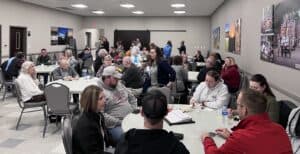
Discussion during my presentation
There are some buildings in Gowrie that would benefit from the shared spaces idea. Take a look at the pictures above from the Empty Buildings Tour Idea. Antiques businesses are often seen sharing space. Another great use is for artists to have studio space and retail space.
The Heartland Community Room at the bank features pictures on their walls of the area, and they are for sale. Shared spaces don’t have to be similar kinds of businesses.
Murals, signs, windows and more

Sign in the local rural telecom building
Signs
In the Webster-Calhoun Cooperative Telephone Association offices they’ve got flipchart size posters that are hand drawn. It’s used to motivate, encourage and to be positive. These are simple and affordable to do. They’re not permanent and can be changed out often. It’s fun too!
Windows
It’s not unusual to see the second story windows boarded over, for a myriad of reasons. I think the owners believe no one is looking at them, and that is not true.
Here’s an idea – paint the boards over the windows. The top part of this building is empty and needs lots and lots of work. The old windows were boarded up and looked awful. The picture below is the building Chicago Style bought.
The community vitality director in Webster City, Iowa found a program involving students at Univ.of Iowa and they created this idea. An artist took large pieces of wood and drew on them, in paint by number style. They were taken out to the fairgrounds and were painted by anyone in town who wanted to help. They feature important people and things in Webster City.
The building on the left is the before, the building on the right is the after.
Murals
The local library in Gowrie has painted a mural on the side of their building. The swimming pool also has a painted mural. Where else could you add art to your community?

Mural on the side of the library
What is that?
There’s a lot right downtown that used to be a car wash. It’s an eyesore, at best. There’s good news for some quick changes you can do! The fence around the lot could be put to good use. Display students’ art, create banners for the area and hang there, have an art contest, and hang the entries there. Loren Ditzler from Warren County, Iowa sent me this picture. Their county courthouse was torn down and left a big empty pit. (They are rebuilding it.) Until it’s finished, they decided to promote their county with banners on their fence.

this used to be a carwash

Warren County banners, photo by Loren Ditzler
Talk to each other.
There are committed people in Gowrie who are excited to make things happen. Lots of people came two nights in a row to hear me talk about their community. It was great to see them talking with each other about their ideas and getting started. Even the County Supervisors came!
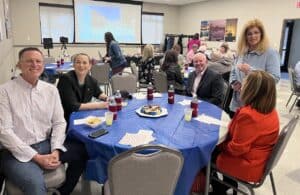
Gowrie Annual Dinner folks
Here’s the thing. You want to keep talking, and gathering, and working on your projects. Don’t fall into the trap of meeting to be meeting and not getting work done. You don’t need committees, or big hairy plans, or permission for most of it. You start with your big idea, gather your crowd, the people who think like you and want to see things happen. Then reach out to others that might be able to help, build your connections. Finally, take small steps. Try things out, see if they work. Let everyone participate in small but meaningful ways.
That’s the Idea Friendly Method:
Gather Your Crowd
Build Connections
Take Small Steps
And share your stories, tell folks what you’re doing. Keep the excitement going!
(if no accreditation on the photo, that means Deb Brown took it)
Support small business to pull your community together (video)
A standing-room-only crowd participated with rural speaker Becky McCray sharing ways to tap the popularity of small businesses to Pull Your Town Together: Overcoming Divisiveness at the Main Street Now National Conference by Main Street America in Boston in 2023. Small businesses are trusted – tap that trust For rural communities with struggling […]
A standing-room-only crowd participated with rural speaker Becky McCray sharing ways to tap the popularity of small businesses to Pull Your Town Together: Overcoming Divisiveness at the Main Street Now National Conference by Main Street America in Boston in 2023.
Small businesses are trusted – tap that trust
For rural communities with struggling businesses, cash mobs and shop local used to be popular economic development tools. They are useful to bring together people from all across the community and bridge divides.
Small businesses are one of the few institutions with broad support across divisions, in fact they are one of the most trusted institutions in the United States. When we give people small but meaningful ways to support local businesses, we’re tapping that shared trust to bridge divides.
To do that, we want to create experiences that bring people together from across different groups to each play a meaningful role.
Cash mobs can pull the community together
Remember cash mobs? A “cash mob” is a group of regular people who decide to all support the same local business at the same time. Picture you and 10 friends all going to the hardware store each with $25 you’re going to spend there. Think how excited you’ll be and how much of a difference you’ll make in the merchant’s sales total.
This has all three elements: Bring people together across groups, give everyone a small but meaningful role, and create experiences that change people’s thinking.
Cash mobs went viral about 10 years ago, and now the buzz has died down. At the Institute for Quality Communities Placemaking Conference, Melody Warnick, author of This is Where You Belong, said cash mobs are still a good way to build place attachment.
Shop Local that still works now
Another project that is not as popular as it used to be is shop local campaigns. To be effective at bringing people together and changing behavior, it has to be more of an experience than just a slogan.
Franklin County, Iowa, started a ‘buy one product local’ campaign that turned into a real experience because they picked toilet paper as the focus. They identified every single business that sold toilet paper, including the Hispanic grocery, the farm supply and the hardware store. Those businesses got really creative with displays and promotions. The local radio station told toilet paper jokes. Facebook was filled with posts of people shopping for toilet paper, pictures included.
Everyone in town was talking about toilet paper! They were redefining themselves as people who supported their town, all because they bought their toilet paper locally.
This has all three elements: Bring people together across groups, give everyone a small but meaningful role, and create experiences that change people’s thinking.
Need a rural speaker for your event?
Rural Speaker Becky McCray presented this session to the Main Street Now Conference, Main Street America, in Boston.
Eye-popping Main Street employment stat
Main Street districts employ almost as many people as Amazon Hannah White, Interim President and CEO of Main Street America, dropped this little statistic at the Main Street Now National Conference in Boston in 2023. Designated Main Street Districts in the US include over 1.1 million jobs, almost as many people as Amazon. Amazon’s approximately […]
Main Street districts employ almost as many people as Amazon
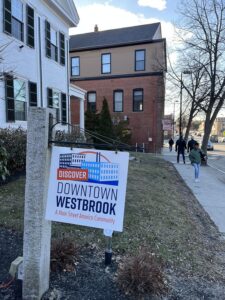
Westbrook, Maine, is a Main Street America community. Photo by Becky McCray
Hannah White, Interim President and CEO of Main Street America, dropped this little statistic at the Main Street Now National Conference in Boston in 2023.
Designated Main Street Districts in the US include over 1.1 million jobs, almost as many people as Amazon.
Amazon’s approximately 1.3 million jobs in the US does not include seasonal holiday help, contract workers, or delivery drivers.
Main Street’s 1.1 million doesn’t include all the downtowns in the US that aren’t designated Main Street Districts and also does not include seasonal holiday help, contract workers, and any other non-employee workers in the districts.
So the comparison is pretty reasonable to me.
Let me know if you use this stat in your community!
